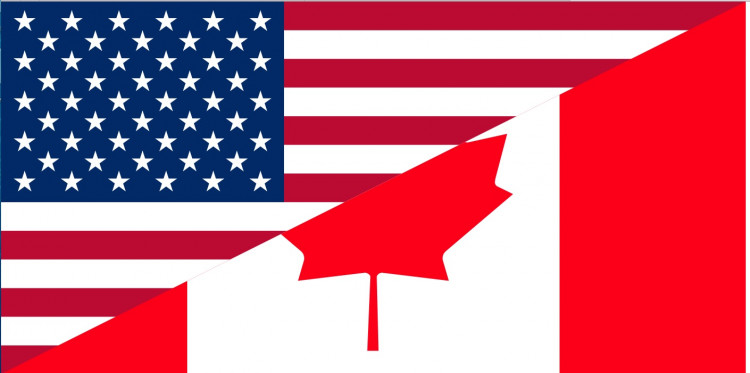
Canadians and Americans Can’t Agree… on scaled questions
Canadians and Americans Can’t Agree… on scaled questions
12 March 2018
Most quantitative researchers are aware of cultural differences when conducting worldwide surveys, and account for these in analysis. The most commonly cited examples of response styles are:
-
acquiescence and dis-acquiescence response style (ARS/DRS); i.e., the tendency to agree or disagree with an item regardless of the content; and
-
extreme response style versus middle response style (ERS/MRS); i.e. the tendency to use the extreme or middle response categories on ratings scales (https://harzing.com/download/respstyles.pdf)
But, when conducting research in the US and Canada, do you expect to see differences? We have looked at two cross-border studies with good base sizes.
Yes, we do find that Americans are more likely than Canadians to use the end-points of the scales (ERS).
-
Study 1: technology feature satisfaction
-
Base sizes: from n=400 to 2400 depending on use of feature we were asking about
-
Scale: five point; “very dissatisfied” to “very satisfied”; every point had a semantic label
-
Total satisfaction (summary measure): Americans were significantly more likely to use the end-points (very satisfied and very dissatisfied)
-
Individual attribute satisfaction:
-
again, Americans were more likely to use end-point (very satisfied) on 14 out of 34 attributes; Canadians only displayed higher “very satisfied” score on one of the 34 (remainder of attributes showing no country difference in use of “very” satisfied)
-
but, Canadians were generally more positive when grouping “very” and “somewhat” satisfied (often called “top 2 box score”): Canadians had higher top 2 box scores for 29 of 34 attributes
-
-
-
-
Study 2: retail shopping opinions
-
Base sizes: US=1194; Canada=421
-
Scale: seven point; “not at all stressful” to “extremely stressful”; only end-points had semantic labels
-
Top 1 (extremely stressful): Americans were more likely to say “extremely stressful” for two of five shopping methods; no country differences for the other three
-
Bottom 1 (not at all stressful): Americans were more likely to say “not at all stressful” for one of five shopping methods; no difference for the other four
-
-
Scale: five point; “strongly disagree” to “strongly agree”; every point had a semantic label
-
Top 1 (strongly agree): Americans were more likely to say “strongly agree” for all three attributes tested
-
Bottom 1 (strongly disagree): Americans were more likely to say “strongly disagree” for one out of three attributes
-
-
Clearly, it is important to look for material differences between service levels in the US and Canada that could be accounting for these differences, particularly on service satisfaction. But, it is important to be mindful that Americans and Canadians might not be homogeneous in their response styles.
 Gary Offenberger is the EVP of Market Research Services at Advanis. He spends his days with a dual focus - learning what makes consumers 'tick' and continually building a fantastic team of market research professionals at Advanis.
Gary Offenberger is the EVP of Market Research Services at Advanis. He spends his days with a dual focus - learning what makes consumers 'tick' and continually building a fantastic team of market research professionals at Advanis.
Search / Recherche
Subscribe to our blog
Get our insights blog updates right to your mailbox once per month. No spam, we promise! Your email address is always safe.
Popular Tags
- ABpoll (1)
- Academics (1)
- Accessibility (3)
- Advertising (1)
- Analytics (8)
- API (1)
- Automation (2)
- Awareness (1)
- BC Food (1)
- Best Practices (9)
- BOS (1)
- Canada (11)
- Cannabis (2)
- Carbon Tax (1)
- Case Study (5)
- CATI (14)
- Choice (8)
- College (1)
- Communications (1)
- Concept Testing (2)
- Conference (5)
- Cordcutting (1)
- Covid-19 (2)
- CSAT (1)
- Customer Experience (12)
- Customer Journey (2)
- Dashboards (1)
- Data Science (2)
- Digital (1)
- Digital Adoption (1)
- DIY Research (2)
- Education (1)
- Email Marketing (1)
- Enviroment (1)
- Expectations (1)
- Finance (1)
- Foresight (2)
- Freelance (1)
- Future of Work (1)
- Gig Economy (1)
- Health (3)
- Human Experience (1)
- HX (1)
- Incentives (8)
- Innovation (6)
- Insights (26)
- Insurance (1)
- ISO (1)
- IVR (11)
- Learning (10)
- Longitudinal (1)
- Low Incidence Populations (2)
- Margin of Error (1)
- Market Research (35)
- Marketing (1)
- Marketing Primer (1)
- Millennial (8)
- Millennials (1)
- Mobile (17)
- MRX (21)
- newMR (1)
- NIS (1)
- NPS (10)
- Online Survey (9)
- Optimization (1)
- Persona (2)
- PMOT (1)
- Police Services (2)
- Pricing (3)
- Project Management (1)
- Public Policy (3)
- Qualitative (11)
- Quant (2)
- Quantitative (14)
- Research (4)
- Response rates (4)
- Responsive (8)
- Sampling (5)
- Security (1)
- Segmentation (2)
- Social Research (6)
- Strategy (1)
- Success (4)
- Survey (10)
- Surveying (3)
- Tips and Tricks (3)
- Trends (12)
- University (1)
- USA (1)
- UX (1)
- Virtual (1)
- WCAG (1)
- Webinar (1)
